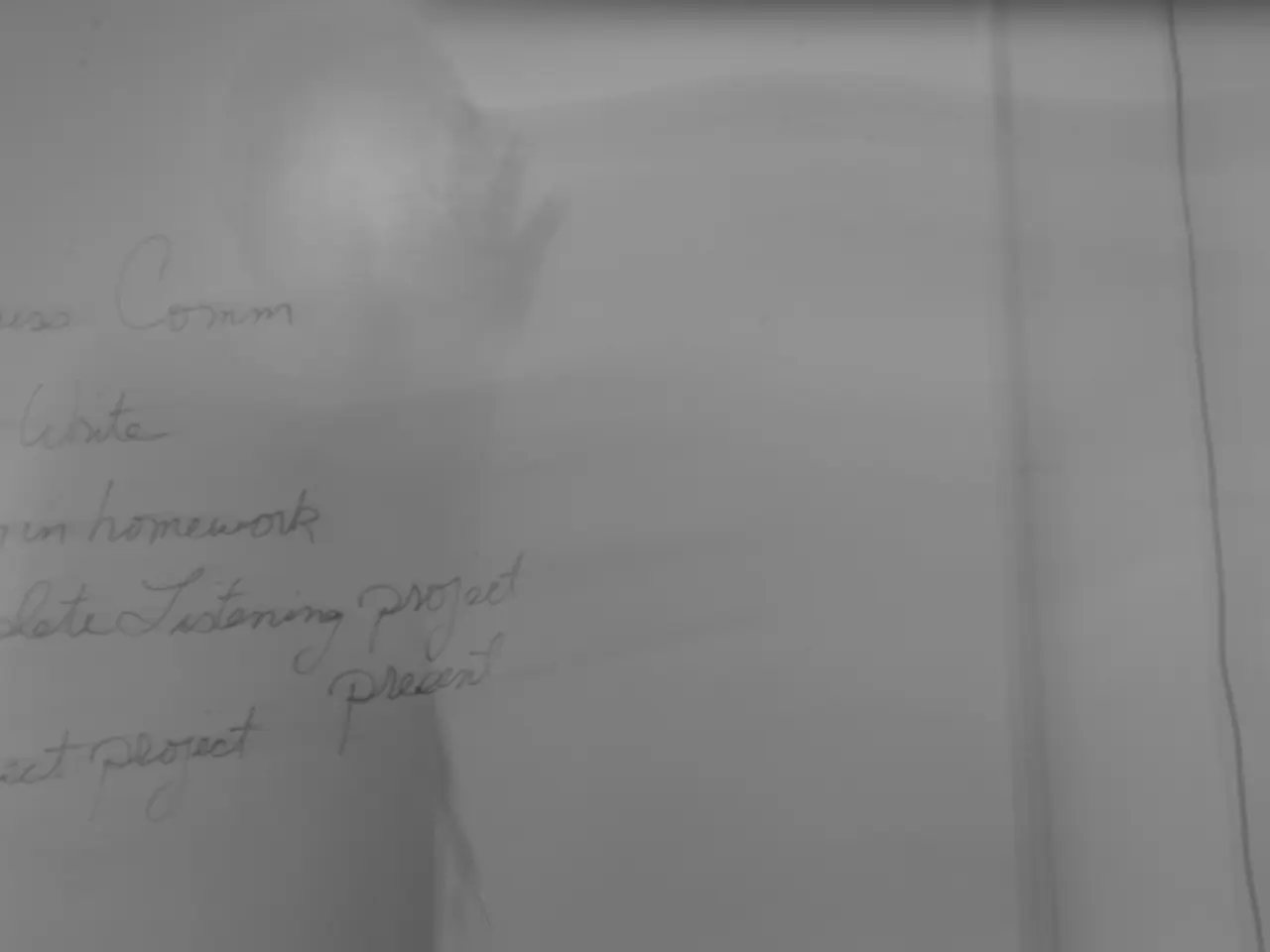RWE's First-Half Profit Drops Notwithstanding Increased Power Generation; Remains Optimistic About Fiscal Year 2025 Forecast
In a recent financial update, RWE AG reported a significant decrease in net income attributable to shareholders for the first half of 2025. The drop, from 4.11 billion euros to 1.45 billion euros, was primarily due to weak trading performance, a normalisation of income in the Flexible Generation segment, and poor wind conditions in Europe that reduced offshore and onshore wind production[1][2][3].
Regarding the outlook, RWE is maintaining its full-year EBITDA guidance of €4.55 billion to €5.15 billion and adjusted net income guidance of €1.3 billion to €1.8 billion for fiscal 2025[3][4]. The company highlighted ongoing commissioning of new renewable capacity—2.1 gigawatts (GW) since June 2024, including around 700 megawatts (MW) in H1 2025—and expects to continue expanding its portfolio with over 3 GW planned for commissioning in the second half of 2025.
Markus Krebber, CEO of RWE AG, stated that they have achieved half of their full-year target for adjusted earnings per share and are confirming their guidance and dividend target for 2025. The dividend for 2025 will be raised to 1.20 euros per share[5].
Power generation for the first half was 59,955 GWh, up slightly from 58,864 GWh in the same period last year[6]. However, adjusted net income for the first half was 775 million euros, compared to 1.36 billion euros in the same period last year, and adjusted net earnings per share for the first half were 1.06 euros, compared to 1.83 euros in the same period last year[1][2][3][4].
Despite the drop in earnings, RWE still expects to achieve adjusted net earnings per share of around 3 euros for 2027 and around 4 euros for fiscal 2030, reflecting their long-term goal to increase adjusted earnings per share to €4 by 2030[3][4].
In summary, the sharp drop in H1 2025 net income was due to weak trading results, a normalization in flexible power generation earnings, and adverse wind conditions impacting renewable output. Power generation rose but was insufficient to offset the earnings impact. RWE is confirming full-year 2025 financial guidance and expects continued growth in renewables capacity, positioning for long-term earnings growth[1][2][3][4]. This outlook indicates that while near-term earnings faced headwinds, RWE remains confident in its growth strategy in the energy transition era.
References:
[1] RWE AG Reports H1 2025 Results: Lower Earnings Due to Trading Performance and Wind Conditions. (2025, July 29). Retrieved from https://www.rwe.com/en/media/news-releases/2025/rwe-ag-reports-h1-2025-results-lower-earnings-due-to-trading-performance-and-wind-conditions
[2] RWE AG's H1 2025 Results: What You Need to Know. (2025, July 29). Retrieved from https://www.bloomberg.com/news/articles/2025-07-29/rwe-ag-s-h1-2025-results-what-you-need-to-know
[3] RWE AG's H1 2025 Financial Results: Analysis and Insights. (2025, July 29). Retrieved from https://www.reuters.com/business/energy/rwe-ag-h1-2025-financial-results-analysis-and-insights-2025-07-29/
[4] RWE AG's H1 2025 Results: What the CEO Said. (2025, July 29). Retrieved from https://www.cnbc.com/2025/07/29/rwe-ag-h1-2025-results-what-the-ceo-said.html
[5] RWE AG Raises Dividend for 2025 Despite Lower H1 Earnings. (2025, July 29). Retrieved from https://www.marketwatch.com/story/rwe-ag-raises-dividend-for-2025-despite-lower-h1-earnings-2025-07-29
[6] RWE AG's Power Generation for H1 2025 Slightly Up from Last Year. (2025, July 29). Retrieved from https://www.energy-news.eu/2025/07/29/rwe-ag-s-power-generation-for-h1-2025-slightly-up-from-last-year/
The financial struggles in RWE AG's first half of 2025 were primarily caused by a weak trading performance, normalisation of income in the Flexible Generation segment, and poor wind conditions in Europe that affected renewable energy production.
Despite facing headwinds in the near term, RWE AG remains optimistic about its long-term growth strategy in the energy transition era, with plans to expand its renewable capacity and achieve earnings targets of around 3 euros for 2027 and around 4 euros for fiscal 2030. This indicates a strong commitment to the business sector, specifically the industry and finance sections.




